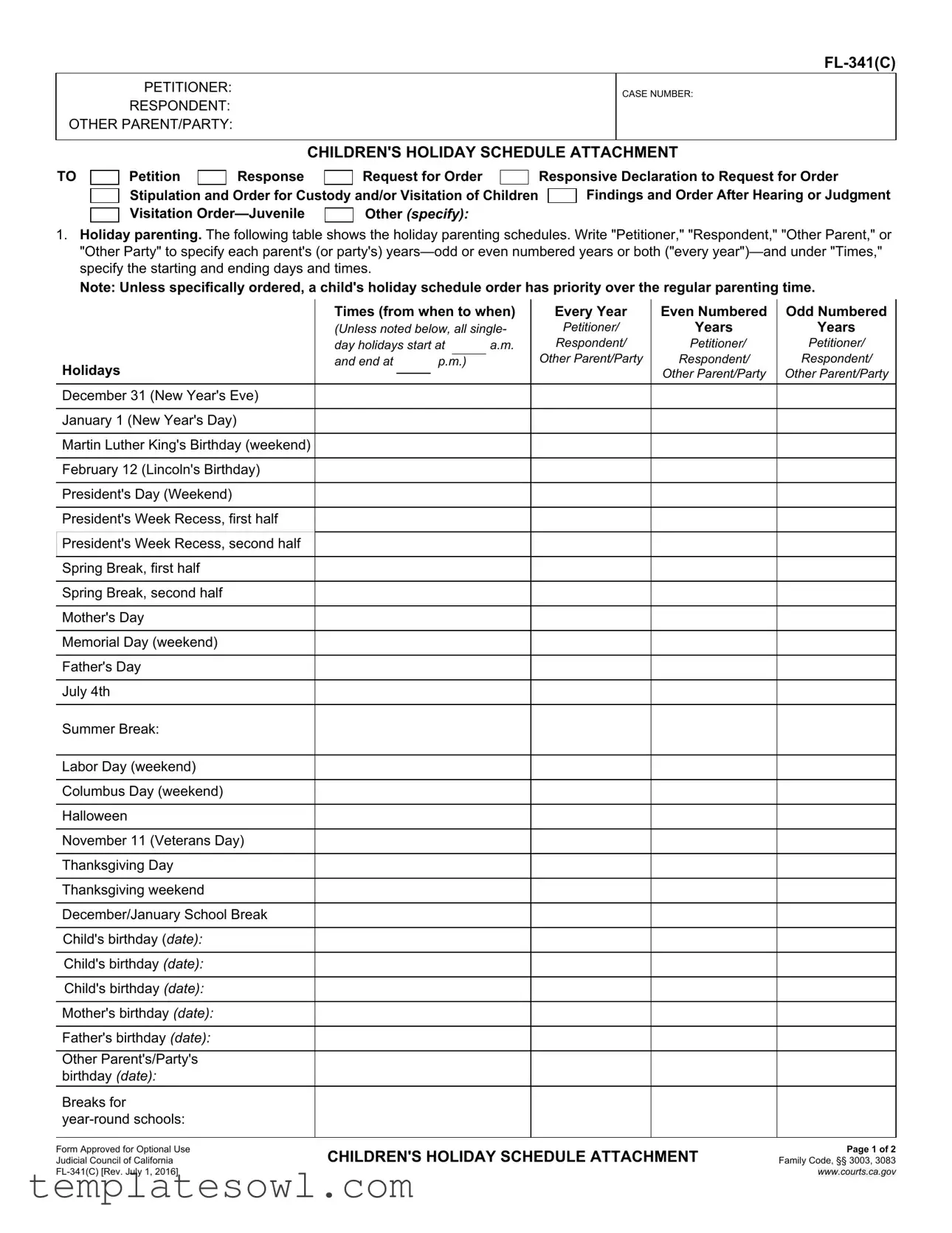What is the purpose of the FL-341C form?
The FL-341C form is designed to outline a holiday parenting schedule for children involved in custody arrangements. Its primary purpose is to provide a clear plan for how holidays will be shared between parents or parties. This ensures that both sides are on the same page regarding times and dates, reducing the chances for conflict during these important times.
How do I fill out the holiday parenting schedule on the form?
When filling out the holiday parenting schedule, you’ll need to specify which parent will have the children on each holiday. This includes designating whether the Petitioner, Respondent, or Other Parent/Party will have the children during odd-numbered years, even-numbered years, or every year. You also need to include the specific times—such as the start and end times for each holiday. It’s essential to remember that holiday arrangements typically take priority over regular parenting time schedules.
Can I include vacations in the holiday schedule?
Yes, the form allows you to incorporate vacation plans into the holiday schedule. You must specify how many days or weeks each parent can take the children on vacation each year. Additionally, the other parent must be notified in writing about vacation plans a set number of days in advance. Providing a basic itinerary is also necessary for good communication, ensuring everyone is informed about travel arrangements.
What happens if parents cannot agree on vacation plans?
If there is a disagreement about vacation plans, parents must try to resolve their issues through discussion before resorting to a court hearing. The form provides options for how disagreements will be handled in even- and odd-numbered years, based on which parent’s suggestions the parties will follow. Open communication is critical in these situations to avoid disruptions to the children’s schedules.
Are there specific rules for vacations outside of California?
Yes, any vacation plans that involve traveling outside California—or even the United States—require prior written consent from the other parent. If consent is not obtained, a court order may be necessary to proceed with travel plans. This requirement helps ensure the safety and well-being of the children while also respecting both parents' rights by keeping them informed.
What should I do if I need to make changes to the holiday schedule?
If changes are necessary, both parents should communicate openly to discuss any adjustments needed in the holiday schedule. If an agreement cannot be reached, it may be necessary to return to court for a modification of the existing order. Maintaining flexibility and working together can help avoid complications and ensure that both parents remain involved in their children’s lives during the holidays.


